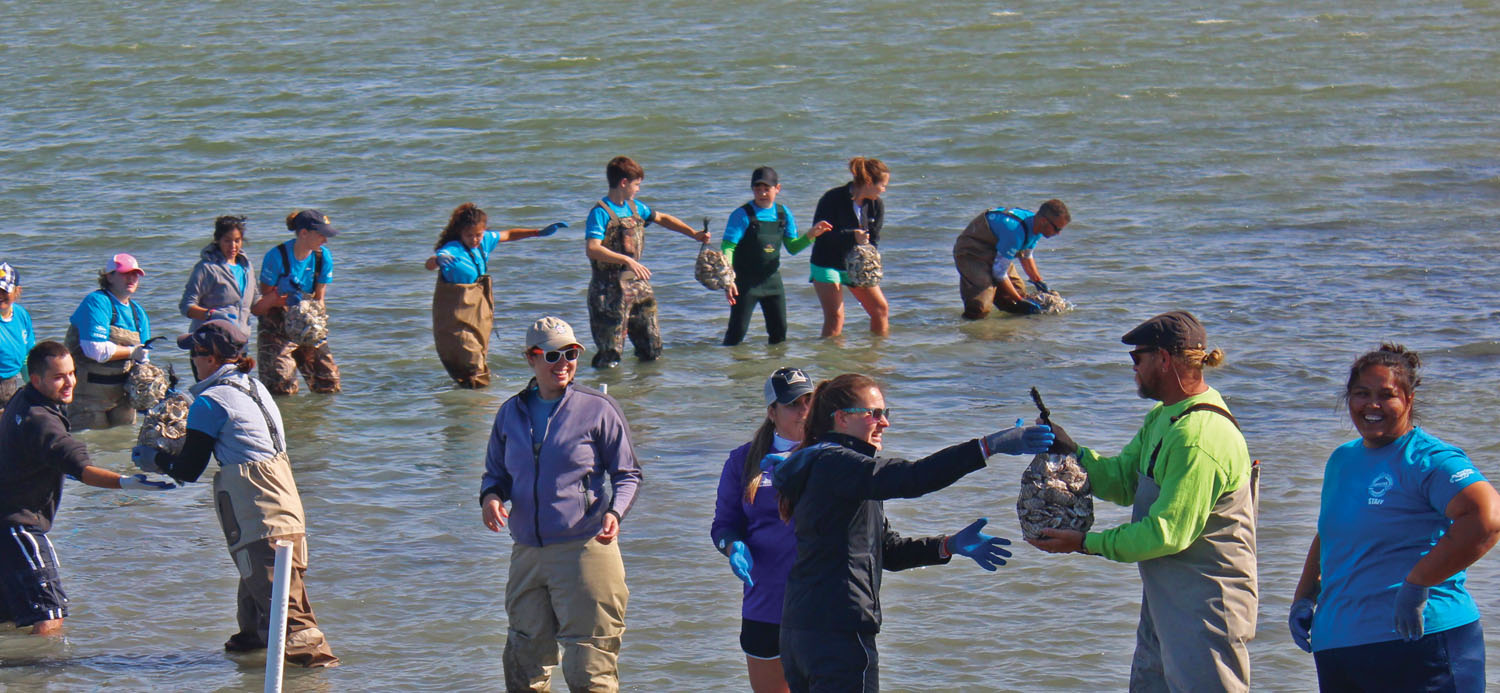What Can You Do For The Resource?

I am often asked, "How can I help CCAwhat volunteer opportunities are available?"
When responding to these questions earlier in my career with CCA, I would have to routinely ask myself first, "What would make me a better steward of the wonderful resources the Texas coast has to offer?"
As saltwater fishing enthusiasts, opportunities are plentiful up and down the entire Texas coast to enjoy our state's marine resources. As the population along the coast and families that travel to the coast continue to grow at a rapid pace, we must put our best foot forward to continue to educate all users, and ourselves, in the importance of the conservation of our marine fisheries and put our best foot forward to individually take the next step in securing them for the future.
The populations of speckled trout and redfish are doing well according to the recent resource surveys of Texas Parks Wildlife Department (TPWD). Most recently there has been plenty of freshwater inflow into the bays and greater conservation measures have been put in place for speckled trout. These two factors alone are already showing signs of improved fisheries and the success of the effort to restore redfish populations continues to be one of the greatest conservation stories of all times.
This is great news for recreational fisherman, but as the number of fish stocks appears to be in good shape we must keep a constant vigil to make sure we sustain these valuable resources. Texas's coastal estuaries seem to be under constant attacks from continued coastal development and the continuous loss of vital freshwater inflows due to drought and a water starved population and industry inland of the Texas coast.
In addition to the growth of our coastal-area towns, the number of licensed recreational fishermen is expected to continue climbing, and the primary charge we have as stewards of the resource is to instill a conservation ethic into future fishermen as well as our current fishing buddies.
This conservation ethic can come in many forms including keeping only the fish we need, picking up trash and other items while we fish and disposing of them properly. Working with a conservation organization is the next step, through fundraising efforts for projects and management initiatives, and educating young and old about the importance of respect for the resource.
TPWD, Coastal Bend Bays and Estuaries Program (CBBEP), Galveston Bay Foundation (GBF), CCA Texas and other like organizations offer many ways to instill a stewardship mentality into the general fishing population and at the same time sharpen that of those that are already active conservationists. All of these organizations offer many educational opportunities in not only literature but also hands-on experience such as hatchery tours, volunteer grass plantings, fishery surveys, beach cleanups and much more.
Non-profit groups such as CCA Texas are always looking for new volunteers to work with local chapters in the day-to-day operations of the chapters and the fundraising process for the organization. The fundraising process provides the necessary funds to help advocate proper fisheries and habitat management, provide invaluable college education funds for future marine biologists, insuring that research is current and cutting edge, providing necessary equipment for local game wardens, and much more. CCA Texas is proud to help provide these important dollars and to work with other organizations in the fight to insure the coast for future generations.
In the end, conservation and stewardship is so much more than not keeping all the fish you can legally keep in a day. It is teaching our families, friends and peers to care for a resource that has been given to us, and why we have to take care of it now for the future. Many of us fall into the routine of fishing with our buddies, staying on the always elusive trophy fish hunt or fulfilling that internal competitive fire by fishing every tournament we can.
Take some time every so often and take your kids, family and others out and let the beauty of the Texas coast soak in. You never know what you might see or learn that you have routinely overlooked. Education and individual action are the keys to the future and if it's overlooked our resources will decline, our efforts will be lost, and we stand the chance to become overly regulated in the use of our resources.
In closing, take a moment to think about the last time or two you have been on the water and what you could have done differently. Could you have picked up a floating plastic bag that you just ran by, maybe explained to your fishing partners why the marsh they were fishing is so important, pointed out shallow seagrass beds to avoid prop-scarring to someone fishing with you that may be new to the area, inform the local game wardens or local biologists of any unusual activity you may have seen? Or maybe only kept a couple of fish for dinner that night instead of boxing a full limit on a day that was on fire with bites?
CCA Texas 2016 Life Member Program
Have you given any thought to becoming a CCA Texas Life Member? Don't wait any longer. After a very successful program in 2015, CCA Texas has taken it to the next level again!
CCA Texas has partnered with Henry Rifles to offer a special edition CCA Henry Golden Boy .22 magnum rifle. Sign up for a life membership in 2016 and you will receive this special rifle with CCA engraving and a special CCA serial number. The price for this life-membership package is $1,000 plus a $25 shipping fee for the rifle to be delivered to a local gun dealer.
For more information, visit www.ccatexas.org.


